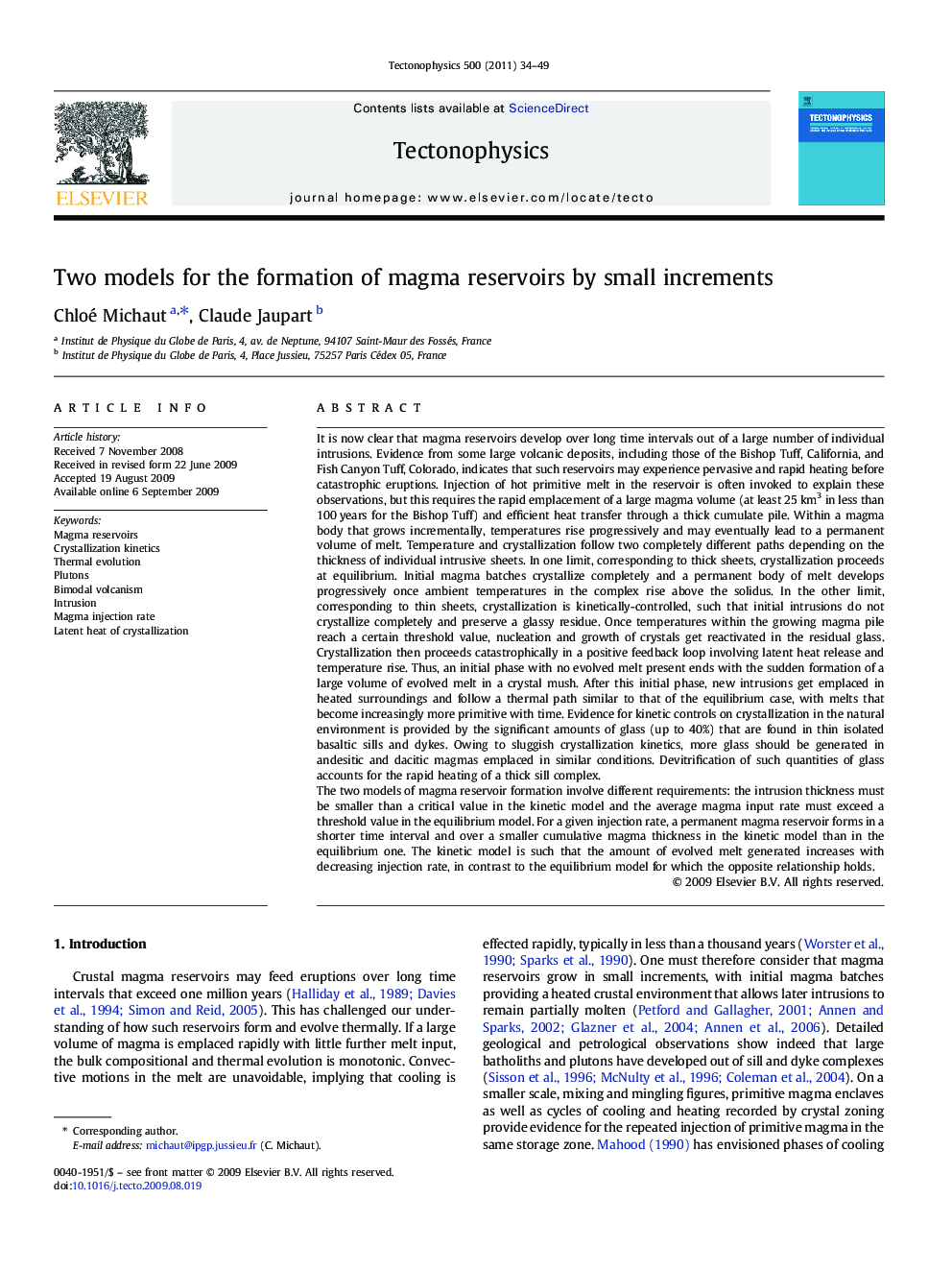| کد مقاله | کد نشریه | سال انتشار | مقاله انگلیسی | نسخه تمام متن |
|---|---|---|---|---|
| 4693195 | 1636851 | 2011 | 16 صفحه PDF | دانلود رایگان |

It is now clear that magma reservoirs develop over long time intervals out of a large number of individual intrusions. Evidence from some large volcanic deposits, including those of the Bishop Tuff, California, and Fish Canyon Tuff, Colorado, indicates that such reservoirs may experience pervasive and rapid heating before catastrophic eruptions. Injection of hot primitive melt in the reservoir is often invoked to explain these observations, but this requires the rapid emplacement of a large magma volume (at least 25 km3 in less than 100 years for the Bishop Tuff) and efficient heat transfer through a thick cumulate pile. Within a magma body that grows incrementally, temperatures rise progressively and may eventually lead to a permanent volume of melt. Temperature and crystallization follow two completely different paths depending on the thickness of individual intrusive sheets. In one limit, corresponding to thick sheets, crystallization proceeds at equilibrium. Initial magma batches crystallize completely and a permanent body of melt develops progressively once ambient temperatures in the complex rise above the solidus. In the other limit, corresponding to thin sheets, crystallization is kinetically-controlled, such that initial intrusions do not crystallize completely and preserve a glassy residue. Once temperatures within the growing magma pile reach a certain threshold value, nucleation and growth of crystals get reactivated in the residual glass. Crystallization then proceeds catastrophically in a positive feedback loop involving latent heat release and temperature rise. Thus, an initial phase with no evolved melt present ends with the sudden formation of a large volume of evolved melt in a crystal mush. After this initial phase, new intrusions get emplaced in heated surroundings and follow a thermal path similar to that of the equilibrium case, with melts that become increasingly more primitive with time. Evidence for kinetic controls on crystallization in the natural environment is provided by the significant amounts of glass (up to 40%) that are found in thin isolated basaltic sills and dykes. Owing to sluggish crystallization kinetics, more glass should be generated in andesitic and dacitic magmas emplaced in similar conditions. Devitrification of such quantities of glass accounts for the rapid heating of a thick sill complex.The two models of magma reservoir formation involve different requirements: the intrusion thickness must be smaller than a critical value in the kinetic model and the average magma input rate must exceed a threshold value in the equilibrium model. For a given injection rate, a permanent magma reservoir forms in a shorter time interval and over a smaller cumulative magma thickness in the kinetic model than in the equilibrium one. The kinetic model is such that the amount of evolved melt generated increases with decreasing injection rate, in contrast to the equilibrium model for which the opposite relationship holds.
Journal: Tectonophysics - Volume 500, Issues 1–4, 8 March 2011, Pages 34–49